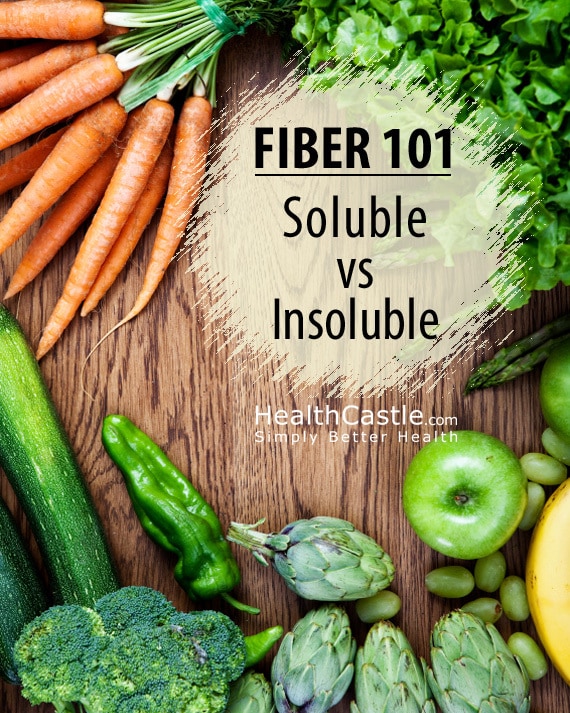
Written By: Gloria Tsang, RD
Title: Founding Registered Dietitian
Alumni: University of British Columbia
Last Updated on:

We all know the benefits of fiber! Fiber not only promotes gut health, but also helps reduce the risk of developing chronic gastrointestinal diseases, such as constipation, hemorrhoids and diverticulosis. A high-fiber diet is also linked to a lower risk of developing cancers, especially colon and breast cancer. In addition, it helps lower LDL cholesterol and total cholesterol. Furthermore, high-fiber foods generally have a lower glycemic index value, an important element in managing Type 2 diabetes.
Table of Contents
Both soluble and insoluble fiber are undigested. They are therefore not absorbed into the bloodstream. Fiber content is often listed under “Total Carbohydrate” on a Nutrition Facts label. Because it is mostly undigested, it provides anyway between 0 to 2 calories per gram. Soluble fiber forms a gel when mixed with liquid, while insoluble fiber passes through our intestines largely intact.

An average diet contains 1:3 soluble fiber to insoluble fiber ratio. In a small study published in 2017, UC Davis researchers compared the difference of 3:1 soluble to insoluble fiber ratio versus a 1:3 ratio. They tested on satiety, glucose response, insulin response, and more. Results showed that 3:1 soluble to insoluble fiber diet significantly increased satiety and decreased hunger. In addition, insulin response was the lowest in the 3:1 soluble to insoluble group. In other words, the body responded to the diet with secreting less insulin, suggesting that insulin sensitivity may have been improved. This result suggested that a greater proportion of soluble fiber may have better metabolic benefits.
Despite the above results, don’t worry too much about choosing a specific type of fiber. Many foods such as oat, oat brans, psyllium husk and flax seed are rich in both insoluble and soluble fiber. Eating enough fiber is more important! The recommended intake of fiber is 25 g to 38 g per day. If you eat at least 5 servings of fruits & vegetables as well as at least 6 servings of grain products per day (at least 3 of which are whole grains), you are very likely meeting the fiber requirements.
Reference: Fiber Content of Foods in Common Portions by Harvard University Health Services, dated May 2004, archived here.
Alumni: University of British Columbia – Gloria Tsang is the author of 6 books and the founder of HealthCastle.com, the largest online nutrition network run by registered dietitians. Her work has appeared in major national publications, and she is a regularly featured nutrition expert for media outlets across the country. The Huffington Post named her one of its Top 20 Nutrition Experts on Twitter. Gloria’s articles have appeared on various media such as Reuters, NBC & ABC affiliates, The Chicago Sun-Times, Reader’s Digest Canada, iVillage and USA Today.
fiber, healthy gut, insoluble fiber, ratio, soluble fiber